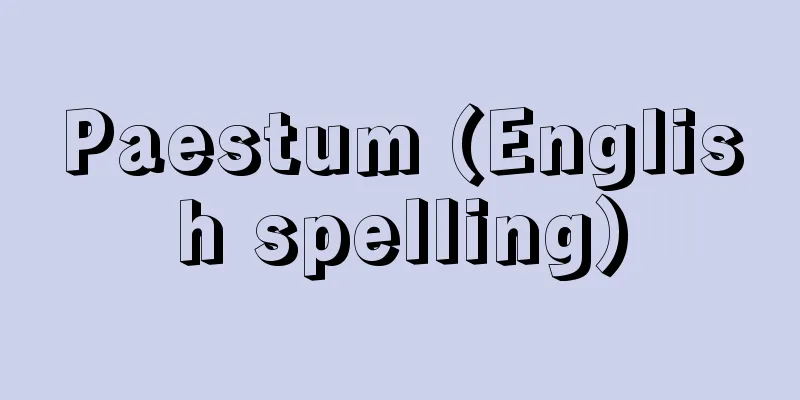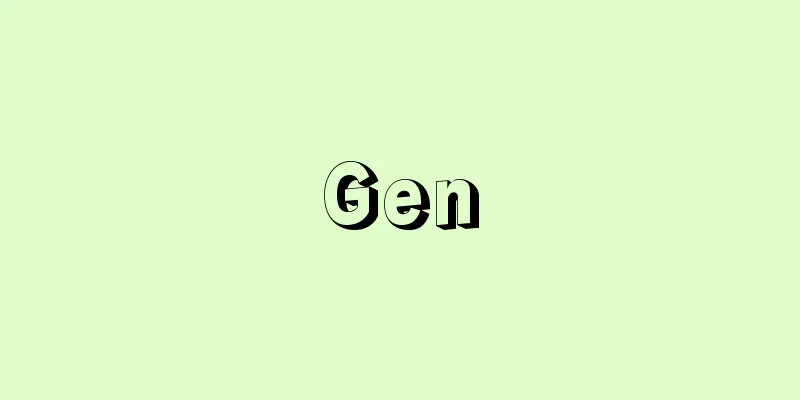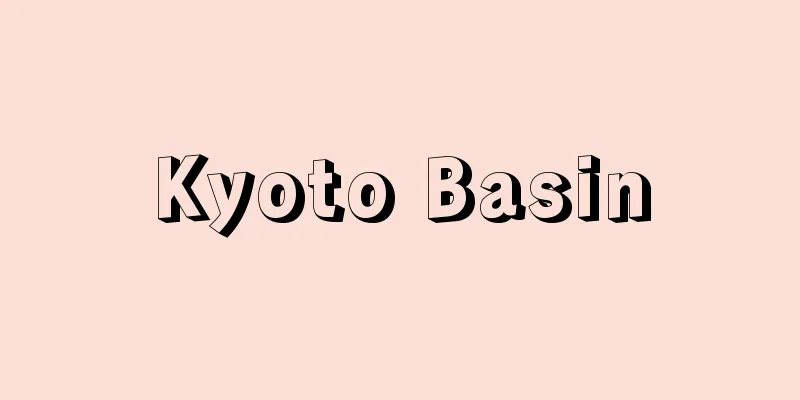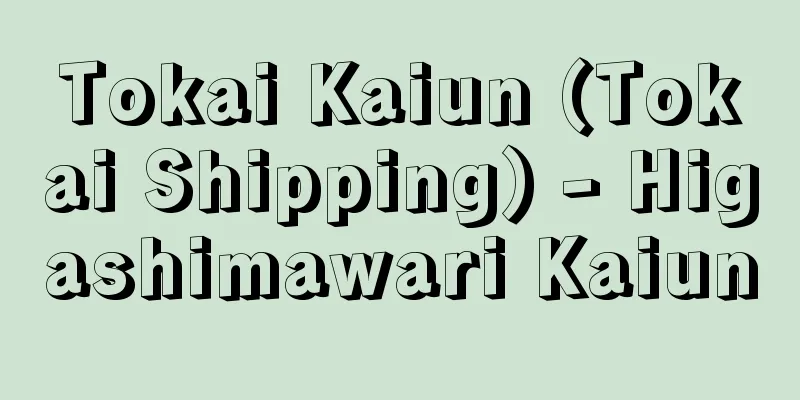International cartel - kokusai karuteru (English spelling) international cartel

|
It refers to the act or organization of two or more countries' companies or their combinations to decide on price setting, production restrictions, sales market allocation, and technology use restrictions while maintaining their respective independence. International cartels are often formed by international companies in the same field to prevent destructive competition, especially dumping. From around the mid-19th century, oligopoly companies began to form in major industrial sectors such as coal and steel in developed capitalist countries, and these large companies eventually began to form monopoly organizations such as cartels, trusts, and syndicates. After achieving monopoly control in the domestic market, they then began to aim for monopoly control in overseas markets, and began to make price agreements with large companies in other countries in an attempt to expand their market control. The earliest international cartel formed in the history of modern monopoly capitalism was an agreement concluded in 1867 between large French and German companies regarding the production and sale of potassium salts. Then, in 1875, the Calcutta Shipping Union was formed to prevent freight rate cut competition on the shipping route from Britain to Calcutta (now Kolkata) in India, and in 1884, a sales agreement (International Rail Cartel) was concluded by the giant steel industries of Britain, Germany, and Belgium. However, there were less than 40 international cartels by the end of the 19th century, and they were still small in scale. It was not until the beginning of the 20th century that international cartels began to show full-scale development, and by the time of the First World War (1914-18), there were 110 of them. The international cartel in the electrical industry in 1907 was a typical example. This was a global market division agreement between the American company GE (General Electric) and the German company AEG (Allgemeine Elektrizitates Gesellschaft), which gave GE the American and Canadian markets, and AEG the German markets of Germany, Austria, Russia, the Netherlands, Denmark, Switzerland, Turkey, and other countries. The 1920s after World War I was the period when international cartels were formed on a large scale, and by the time of World War II (1939-45) there were more than 300 of them. It is said that in the 10 years from 1928 to 1937, the trade volume handled by the corporate alliances that formed international cartels accounted for about 40% of the total volume of world trade. Various international cartels were formed in industrial fields such as petroleum, steel, coal, non-ferrous metals, light bulbs, rubber, matches, and weapons, but the most powerful of them all was the International Petroleum Cartel, formed in 1928. This was created by Standard Oil of New Jersey of the United States, Royal Dutch Shell, a joint venture between the United Kingdom and the Netherlands, and Anglo-Persian Petroleum of the United Kingdom, and they made agreements on the division of the oil market, prices, and production volumes, and as a result, they reaped enormous profits. During World War II, most of the international cartels ceased to function temporarily, but after the war, they were revived and new cartels were formed. The most notable of these was the International Oil Cartel. This was a reorganization and revival of the prewar cartel, and consisted of seven major oil companies: Standard Oil of New Jersey, Gulf Oil, Texaco, Mobil Oil, Standard Oil of California (Socal), Royal Dutch Shell, a joint venture between the UK and the Netherlands, and British Petroleum (the successor to Anglo-Persian Oil). In 1952, these seven companies controlled 65% of the capitalist world's oil reserves, 55% of crude oil production, and 57% of refining capacity. However, after the Organization of the Petroleum Exporting Countries (OPEC) gained the right to independently determine oil prices, the power of the international oil cartel weakened, and reorganization within the international oil cartel is also underway, such as Socal's merger with Gulf Oil (which was renamed Chevron in 1984). Many other international cartels have been formed, such as the international shipping cartel, the international steel cartel, and the international electricity cartel, but it is very difficult to understand their contents. This is because after World War II, major developed countries enacted antitrust laws, making international cartels illegal except for a few, and the United Nations and GATT (the predecessor of the World Trade Organization, or WTO) also regulated international cartels, so many of them have gone underground and are operating as "dark cartels." In this context, in 1967, an international dyestuffs cartel consisting of 10 dyestuff manufacturers from European countries was exposed by the European Economic Community (EEC, now the European Union, after the EC = European Community) court, and in 1972 (Showa 47), an international synthetic fiber cartel consisting of chemical fiber manufacturers in Japan and what was then West Germany, which agreed to market division, was exposed by the West German Cartel Office, and was abolished in Japan as a violation of the Antimonopoly Act. A new trend in international cartels after the Second World War was the emergence of cartels authorized by governments or directly involved by governments, while regulating international cartels of monopolies. An example of the former is the International Air Transport Association (IATA), and an example of the latter is the European Coal and Steel Community (ECSC). In addition, since the 1960s, the number of international resource cartels formed by resource-rich countries has increased amid intensifying resource issues. Representative examples include the Organization of the Petroleum Exporting Countries mentioned above, the Intergovernmental Council of Copper Exporting Countries (CIPFC), and the Association of Iron Ore Exporting Countries (AIOEC). Furthermore, as the globalization of the economy progressed from the mid-1980s to the 1990s, international price cartels were formed in which multinational companies made partial agreements on prices across borders. The EU maintained a strict stance against cartels that distorted fair competition from 2007 to 2008, imposing huge fines on consumers. In order to create a free and equal environment in the single market made up of the 27 member states, the EU's competition policy involves the European Commission cracking down on violations of antitrust laws, such as cartels, across borders. Fines on cartels are capped at 10% of total global sales, and there have been cases in which the fines have reached tens of billions of yen per company. [Yoshiharu Shimizu] "United Nations Report, translated by Hasegawa Yukio , Irie Shigeo, and Morita Ken, 'International Cartels' (1980, Bunshindo)" ▽ "Multinational Corporations in History: The Development of International Business Activities and the World Economy' edited by Alice Taykova, Maurice Lévy-Leboyer, et al., translated by Asano Eiichi, et al. (1991, Chuo University Press)" ▽ "Intellectual Property Rights from the Perspective of Market Competition' by Tomita Tetsuo (1993, Diamond Inc.)" ▽ "International Industry Theory' edited by Nakagawa Nobuyoshi (1993, Minerva Shobo)" ▽ "The Definitive Edition of International Oil Cartels: Reports of the United States Federal Trade Commission, translated by Suwa Ryoji, revised reprint edition (1998, Oil Reports)" ▽ "American Antimonopoly Law: American Antitrust Law' by Murakami Masahiro (1999, Kobundo)" ▽ "EC Competition Law - EC Antimonopoly Law" by Murakami Masahiro, 2nd edition (2001, Kobundo)" ▽ "International Economic Law" by Matsushita Mitsuo, 3rd edition (2001, Yuhikaku)" ▽ "International Cartels" by Matsushita Mitsuo (Nikkei Shinsho)" ▽ "World Petroleum Chronology" by Murakami Katsutoshi (2001, Oil Report Co.)" ▽ "Studies in the Management History of the International Chemical Industry" by Ito Hiroto (2002, Hassakusha)" ▽ "Competition Policy and Economic Development in APEC Countries" edited by Izuru Hiroshi, Yamauchi Teisuke, John O. Haley et al. (2002, Chuo University Press) [References] | | | | | | | | | |Source: Shogakukan Encyclopedia Nipponica About Encyclopedia Nipponica Information | Legend |
|
2国またはそれ以上の国々の企業あるいはその結合体が、それぞれの独立性を保ちながら、価格の設定、生産制限、販売市場の割当て、技術の使用制限などを取り決める行為、ないしはその組織をいう。国際カルテルは、同じ分野の国際的企業が参加して、破滅的な競争とくにダンピングなどを防止するためにつくられることが多い。19世紀なかばごろから、先進資本主義国においては、石炭業や鉄鋼業などの主要な産業部門で寡占企業が形成され始め、やがてこれらの巨大企業はカルテル、トラスト、シンジケートなどの独占組織をつくるようになった。そして国内市場における独占的支配を達成すると、次には海外市場における独占的支配を企図するようになり、他の国の巨大企業と価格協定などを結び、市場支配を拡大しようとする動きを示すようになった。 近代の独占資本主義史上もっとも早く形成された国際カルテルは、1867年にフランスとドイツの大企業がカリウム塩の生産と販売に関して結んだ協定である。ついで1875年には、イギリスからインドのカルカッタ(現コルカタ)への航路の運賃引下げ競争防止の目的でカルカッタ海運同盟が結成され、さらに1884年にはイギリス、ドイツ、ベルギーの巨大鉄鋼業による販売協定(国際軌条カルテル)が結ばれた。しかし、19世紀末までの国際カルテルの数は40に満たず、まだ小規模であった。国際カルテルが本格的発展を示したのは、20世紀に入ってからであり、第一次世界大戦(1914~18)前までに110を数えた。1907年の電気産業における国際カルテルは、その典型的なものであった。これはアメリカのGE(ゼネラル・エレクトリック)とドイツのAEG(アルゲマイネ・エレクトリツィテーツ・ゲゼルシャフト)との世界市場分割協定であり、GEはアメリカとカナダの市場を手に入れ、AEGはドイツ、オーストリア、ロシア、オランダ、デンマーク、スイス、トルコなどの市場を手に入れた。 第一次世界大戦後の1920年代は、国際カルテルがもっとも大規模に結成された時期であり、第二次世界大戦(1939~45)前までにその数は300以上を数えた。1928年から1937年までの10年間に、国際カルテルを形成した企業連合が取り扱った貿易高は、世界貿易総量の約40%を占めたといわれる。石油、鉄鋼、石炭、非鉄金属、電球、ゴム、マッチ、兵器などの産業分野で各種の国際カルテルが結成されているが、そのなかでもっとも強大なものは、1928年に結成された国際石油カルテルであった。これはアメリカのニュージャージー・スタンダード石油、イギリスとオランダ合同のロイヤル・ダッチ・シェル、イギリスのアングロ・ペルシア石油によってつくられたもので、石油市場の分割、価格、生産量について協定を結び、その結果、莫大(ばくだい)な利益を獲得した。 第二次世界大戦中は、国際カルテルのほとんどは一時機能を停止していたが、戦後になると国際カルテルはふたたび復活し、結成が進められた。そのなかでもっとも顕著な動きを示したものが国際石油カルテルであった。これは戦前のものを再編・復活させたもので、アメリカのニュージャージー・スタンダード石油、ガルフ石油、テキサコ、モービル石油、カリフォルニア・スタンダード石油(ソーカル)、イギリスとオランダ合同のロイヤル・ダッチ・シェル、イギリスのブリティッシュ・ペトロリアム(アングロ・ペルシア石油の後身)の七大石油会社(メジャー)で構成され、1952年には、この7社で、資本主義世界の石油埋蔵量の65%、原油生産高の55%、精油能力の57%を支配した。だが石油輸出国機構(OPEC(オペック))が石油価格の自主決定権をもってから、国際石油カルテルの力は弱くなり、ソーカルがガルフ石油を合併(1984年シェブロンと改称)するなど、国際石油カルテル内での再編成も進められている。 そのほか、国際海運カルテル、国際鉄鋼カルテル、国際電気カルテルなど、多くの国際カルテルが結成されているが、その内容を把握するのは非常に困難になっている。それは、第二次世界大戦後、主要先進国で独占禁止法が制定され、国際カルテルは一部を除いて非合法化されるとともに、国際連合やガット(世界貿易機関=WTOの前身)においても国際カルテルを規制したため、地下に潜行して「闇(やみ)カルテル」として活動するものが多くなっているからである。こうしたなかで、1967年にはヨーロッパ各国の染料メーカー10社による国際染料カルテルがヨーロッパ経済共同体(EEC。EC=ヨーロッパ共同体を経て現EU=ヨーロッパ連合)裁判所によって摘発され、1972年(昭和47)には、日本と当時の西ドイツの化繊メーカーによる市場分割等を協定した国際化合繊カルテルが西ドイツのカルテル庁によって摘発され、日本でも独占禁止法違反として廃棄させられた。 また、第二次世界大戦後の国際カルテルの新しい動きとしては、独占企業の国際カルテルを規制する一方で、政府の公認によるもの、または政府が直接関与するものとして出現してきたことにある。前者の例としては国際航空運送協会(IATA(イアタ))などが、後者の例としてはヨーロッパ石炭鉄鋼共同体(ECSC)などがあげられる。そのほか1960年代以降になると、資源問題の激化のなかで、資源保有国で結成した国際資源カルテルが増えてきている。前出の石油輸出国機構をはじめとして、銅輸出国政府間協議会(CIPFC)、鉄鉱石輸出国連合(AIOEC)などがその代表的なものである。さらに、1980年代なかばごろから1990年代にかけて経済のグローバル化が進み、国境を超えて多国籍企業が価格などについて部分的に協定を結んでいるのは国際価格カルテルである。EUは2007年~2008年に公正な競争をゆがめるカルテルなどに厳格な姿勢を貫き、消費者のために巨額の制裁金を科している。EUの競争政策は加盟27か国でつくる単一市場を自由で平等な環境にするため、欧州委員会が国をまたいでカルテルなど独占禁止法の違反行為を取り締まっている。カルテルには世界全体の売上高の10%を上限に制裁金を科しており、1社当り数百億円に上った事例もある。 [清水嘉治] 『国際連合報告書、長谷川幸生・入江成雄・森田憲訳『国際カルテル』(1980・文真堂)』▽『アリス・タイコーヴァ、モーリス・レヴィ・ルボワイエほか編、浅野栄一ほか訳『歴史のなかの多国籍企業――国際事業活動の展開と世界経済』(1991・中央大学出版部)』▽『富田徹男著『市場競争から見た知的所有権』(1993・ダイヤモンド社)』▽『中川信義編『国際産業論』(1993・ミネルヴァ書房)』▽『米国連邦取引委員会著、諏訪良二訳『定本 国際石油カルテル――米国連邦取引委員会報告書』補正復刻版(1998・オイル・リポート社)』▽『村上政博著『アメリカ独占禁止法――アメリカ反トラスト法』(1999・弘文堂)』▽『村上政博著『EC競争法――EC独占禁止法』第2版(2001・弘文堂)』▽『松下満雄著『国際経済法』第3版(2001・有斐閣)』▽『松下満雄著『国際カルテル』(日経新書)』▽『村上勝敏著『世界石油年表』(2001・オイル・リポート社)』▽『伊藤裕人著『国際化学工業経営史研究』(2002・八朔社)』▽『伊従寛、山内惟介、ジョン・O・ヘイリーほか編『APEC諸国における競争政策と経済発展』(2002・中央大学出版部)』 [参照項目] | | | | | | | | | |出典 小学館 日本大百科全書(ニッポニカ)日本大百科全書(ニッポニカ)について 情報 | 凡例 |
>>: International river - kokusai kasen (English spelling) international river
Recommend
Midrash (English spelling)
A work that describes a method of Jewish biblical ...
Fuhrer (English spelling)
… [Political History, Diplomatic History] The pol...
Bottom-fermented beer - Kamen Hakko Beer
…It is the most widely consumed alcoholic beverag...
lobbyist
...Lobby is the general term for the space for th...
Cite [island] - Cite
A small island in the Seine in the center of Paris...
Foolish Wives
American film. Produced in 1922. This was the thir...
Trochlear nerve
The fourth cranial nerve originates from the midbr...
Kameya Kumakichi
…In 1644, German Jesuit priest A. Kircher invente...
World's Fair of Science
The World Expo was held in Tsukuba Science City, ...
Kawachibon
...Those who tried to resolve the confusion of th...
Hoarseness in school children - Gakudo Sasei
...The color of the surface is often almost the s...
Oxydol - Oxydol (English spelling)
The Japanese Pharmacopoeia name for hydrogen pero...
Lake Furen
A brackish lagoon at the base of the Nemuro Penin...
Rampal - Jean-Pierre Rampal
French flute player. He studied under his father ...
lamastu
...Then, this kind of being (the bull-shaped mons...









